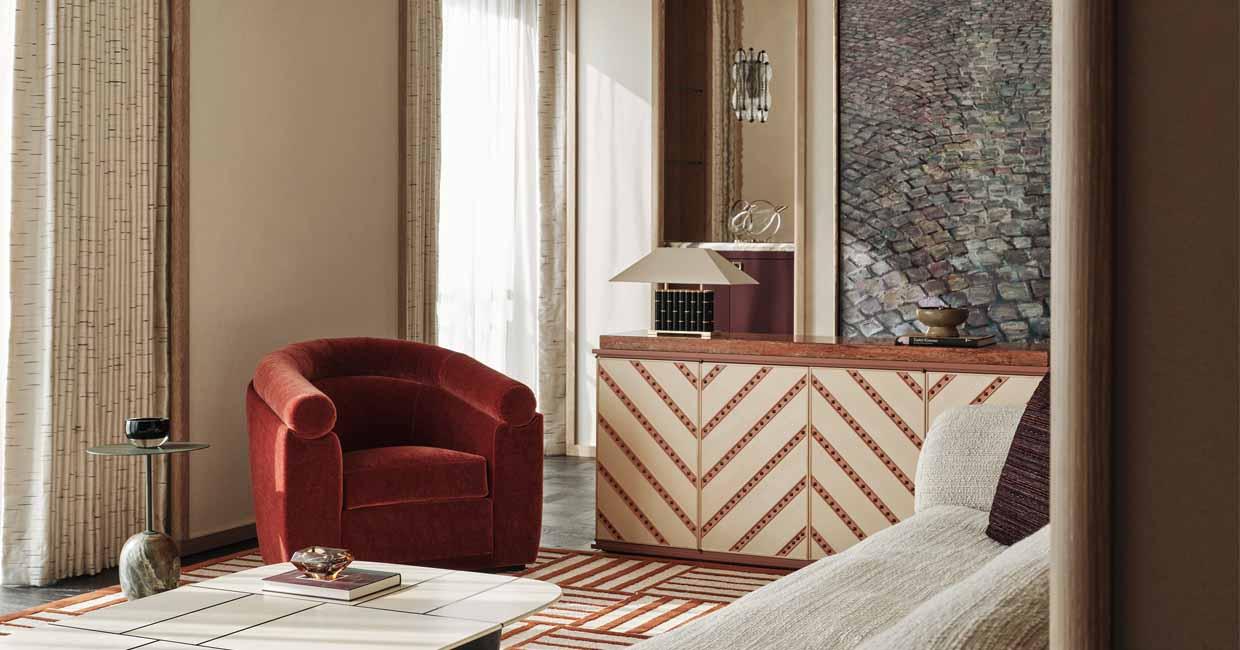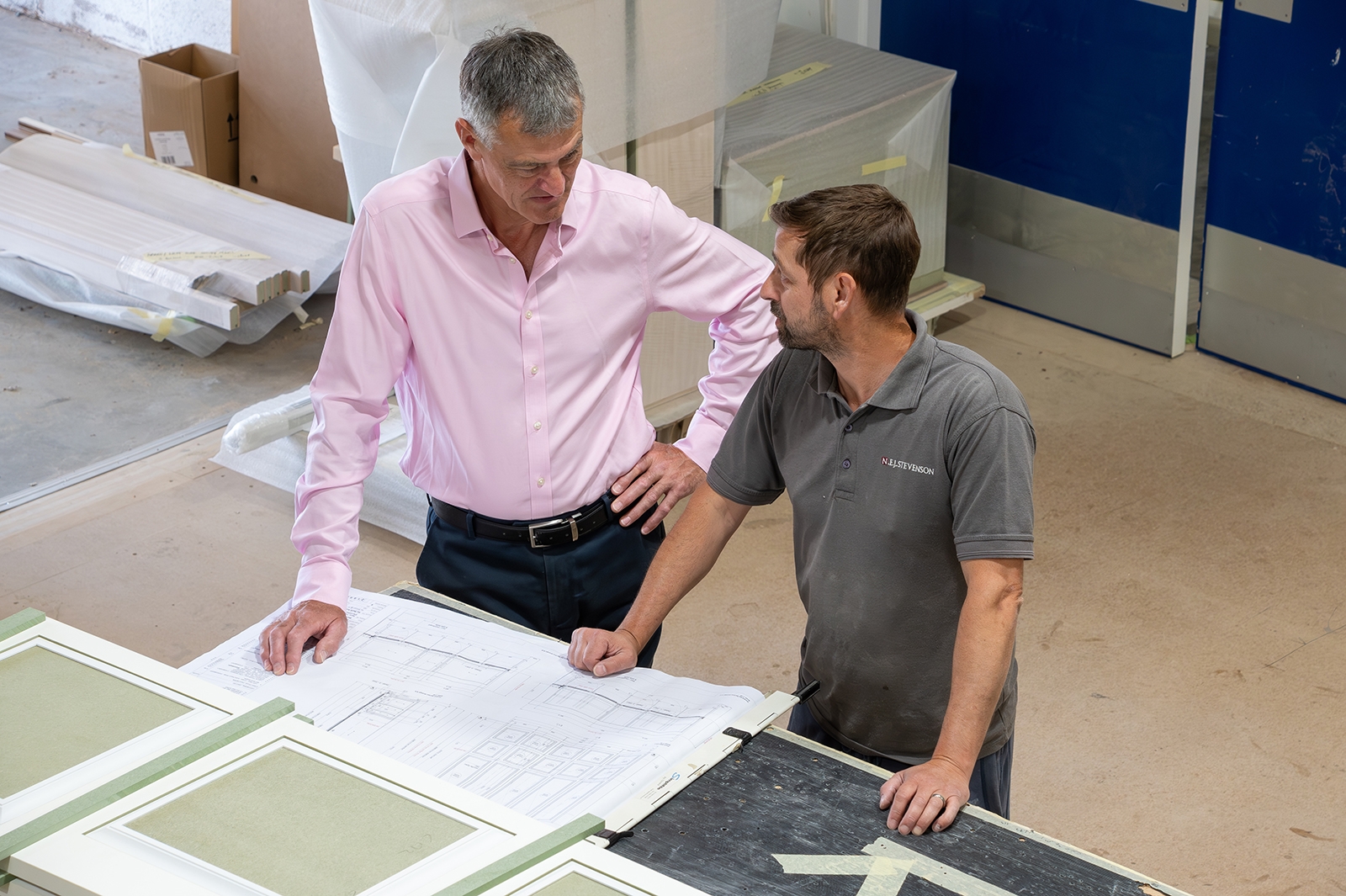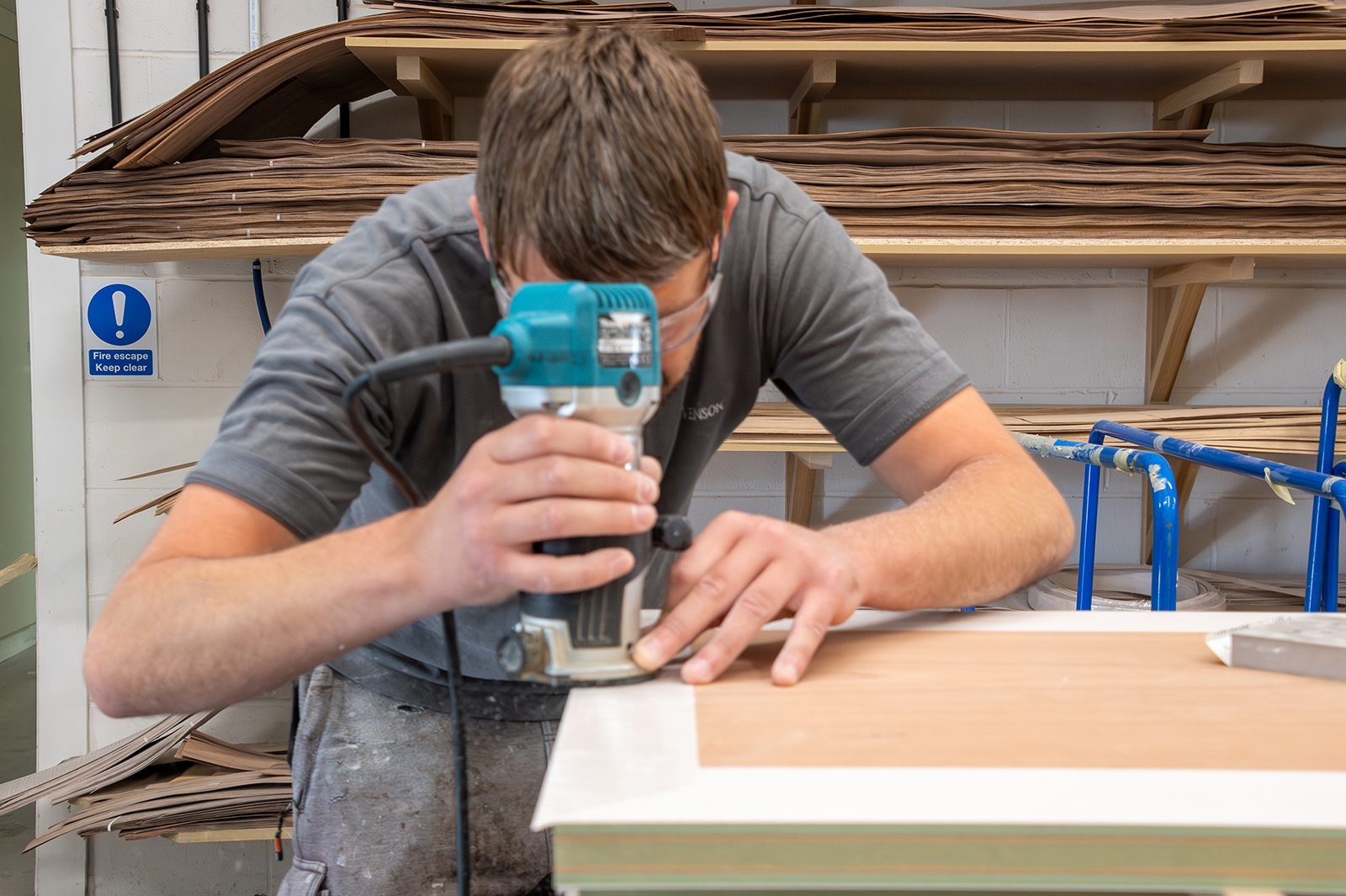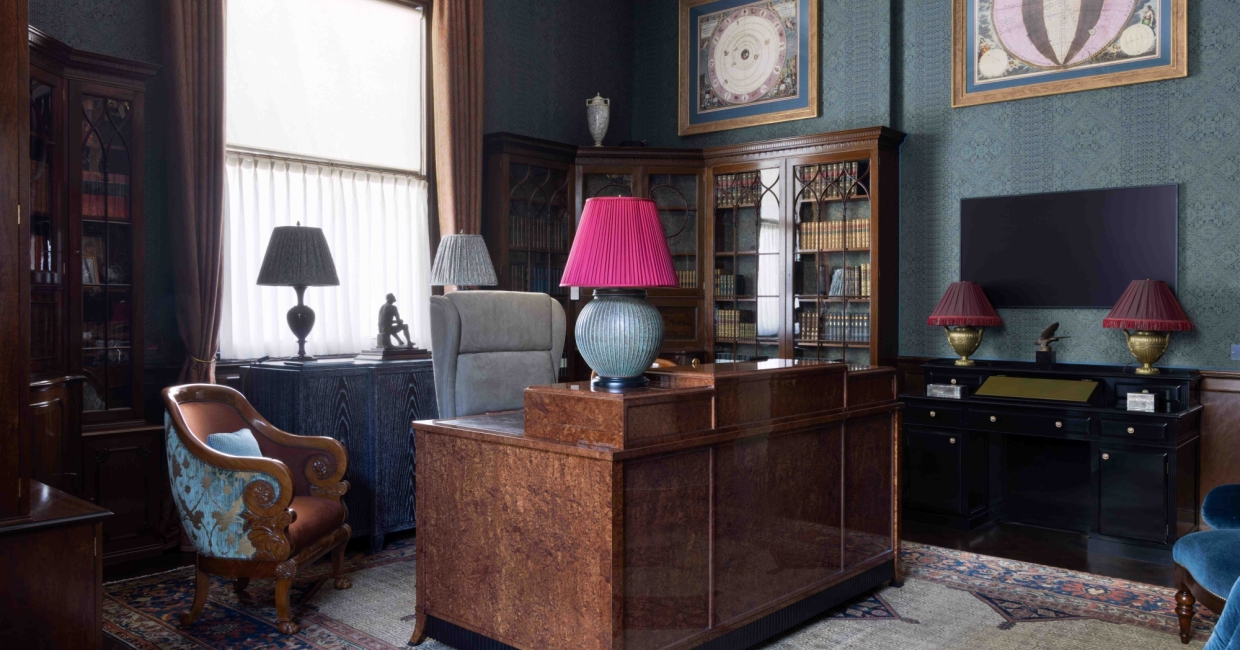With decades of experience in high-end furniture and specialist joinery, N.E.J. Stevenson has forged a reputation for exquisite craftsmanship, intelligent problem-solving, and a deep respect for both materials and design intent. Whether working alongside interior designers or directly with private clients, the Warwickshire-based firm brings a thoughtful and rigorous approach to every brief.
“We have an uncompromising attitude to quality, which has led us to be one of the best companies in our field,” explains Neil Stevenson, Managing Director of N.E.J. Stevenson. “Our aim is always to add value to the design, whether that’s by solving structural issues or elevating the aesthetic.
“Too often, the focus is purely on a programme which encourages speed over quality, but clients will remember the quality and usability long after everything else.”
This ethos of quality and consideration runs through every stage of N.E.J. Stevenson’s process, particularly when working directly with end clients.
“We always begin by trying to get a sense of the client’s aesthetic and functional needs,” says Neil. “From there, we’re essentially working from a blank page. The constraints of the space — the size, the appliances, the flow of the room — those all shape the design. What’s left becomes the opportunity for creativity.”

Whether installing bespoke cabinetry into Grade II Listed buildings or crafting furniture for contemporary high-spec interiors, N.E.J. Stevenson maintains a consistent approach on-site. “The priorities are always the same: the safety of our team, the people around us, and the protection of the existing building fabric,” Neil notes.
Striking a balance between client vision and technical feasibility is another area where the team’s experience shines. “It’s not about saying no — it’s about explaining the reality,” says Neil. “We sometimes get requests to use solid timber in ways that aren’t viable structurally. We need to understand the client’s thought processes, as well as their prejudices with regard to certain materials such as MDF, and then educate them to understand the attributes of each type of material and its appropriateness for different designs and constructions.”
One project that exemplifies the studio’s creative problem-solving was a concept table designed for the International Furniture Show. “We were exploring the question: is furniture art?,” recalls Neil. “We determined that if something had a practical use, it couldn’t be art, so we designed a table that was both practical and impractical, depending on how it was manipulated.

“The circular top was flat until it was rotated, at which point it became a wave and was therefore impractical as a table. The initial designs for the mechanism were highly complex and mechanical and didn’t work effectively, as well as being incredibly expensive. Rather than abandoning the idea, we revisited the whole thought process around the mechanism and came up with a very simple, inexpensive solution to make it work perfectly.”
Sustainability is a growing priority for N.E.J. Stevenson, though Neil is quick to point out that it’s not always straightforward. “There’s a lot of misinformation, particularly around timber accreditations. Some materials that carry accreditation are actually less sustainable than non-accredited ones.
“Our approach is to be honest with clients about the environmental impact of their choices. If a material is legally and ethically sourced, and they still want it, we’ll use it — but we make sure they understand the full picture.”
On the technical front, challenges often arise in large-scale or unusual commissions. One standout was a 40-foot extendable Victorian Gothic dining table, designed for regular use in a hospitality setting.
“We determined that the traditional timber sliding systems would be impractical due to sagging over significant distances and the likelihood of the mechanism seizing up due to climatic conditions or inappropriate handling,” explains Neil.
“We designed a bespoke aluminium system utilising sliding door mechanisms to provide a rigid extension and a smooth action. To facilitate the table being moved around, we designed bespoke sledges which lifted the table off the ground, allowing it to be wheeled into position without damaging the floor.”

When asked what distinguishes a good bespoke project from a truly great one, Neil is unequivocal. “It comes down to alignment and intention. If everyone involved is focused on achieving excellence and is not willing to compromise, then you can create something extraordinary. That kind of project is usually not without conflict, but individuals push each other to be better.”
Looking ahead, N.E.J. Stevenson continues to build on its strong foundations. “We’re growing steadily and securely, and investing in our apprenticeship programme. We want to bring new talent into the industry and pass on the values that have defined this company,” says Neil.
“As long as we keep delivering quality and staying true to our principles, I think the future is bright.”










